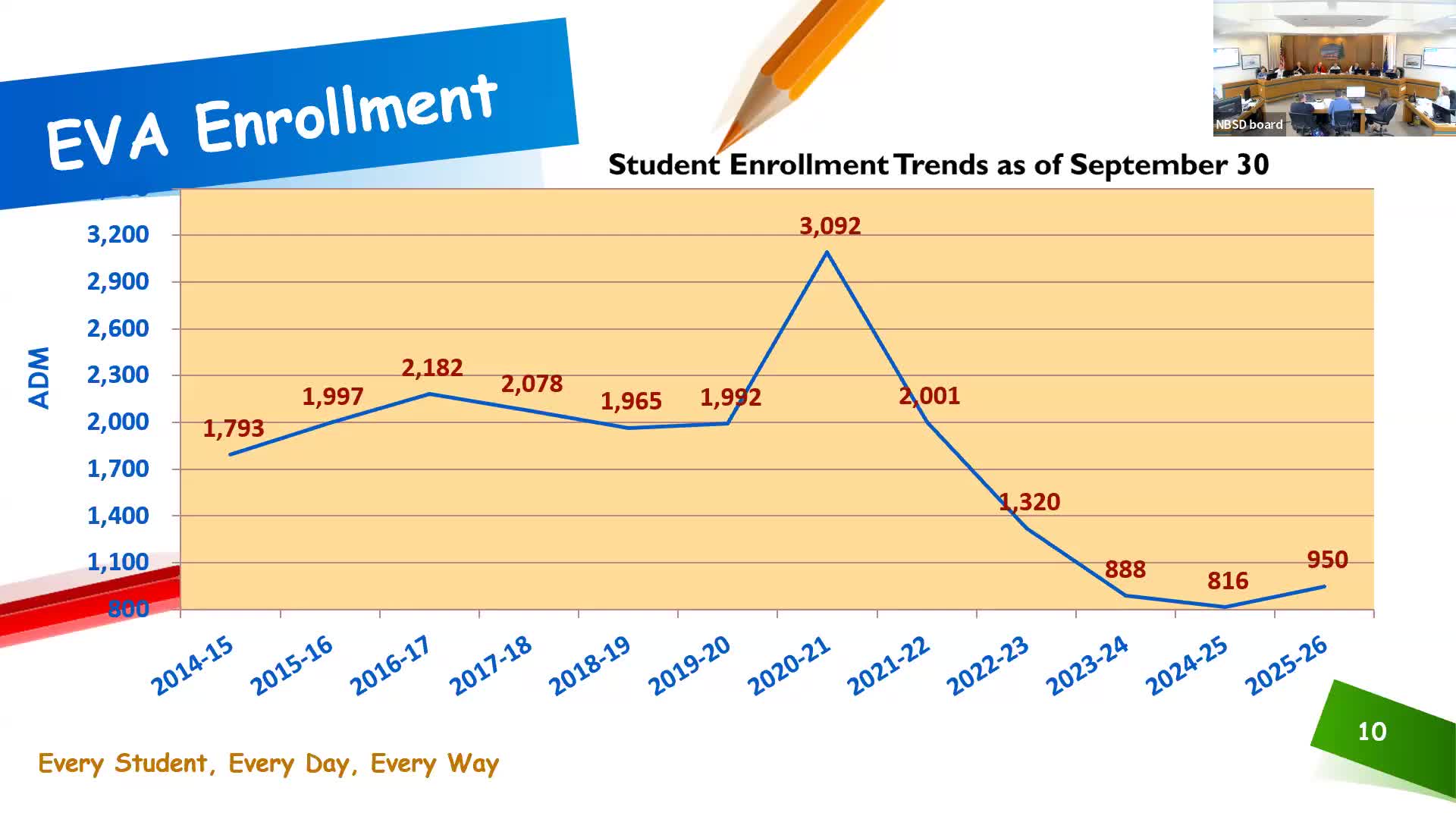School Board addresses budget challenges amid declining enrollment and rising costs
May 13, 2025 | North Bend SD 13, School Districts, Oregon
This article was created by AI summarizing key points discussed. AI makes mistakes, so for full details and context, please refer to the video of the full meeting. Please report any errors so we can fix them. Report an error »

The North Bend School District 13 held its budget meeting on May 13, 2025, to discuss the proposed budget for the 2025-2026 school year. The meeting focused on the financial challenges facing the district, including rising costs and declining enrollment, while outlining the anticipated funding from the state.
The meeting began with a review of the budget's structure, highlighting that a significant portion of the budget involves funds that flow through the district to charter schools. This flow of funds contributes to the appearance of high expenditures in purchased services. The district's enrollment directly impacts the state school fund, with an increase in students leading to more funding, while a decrease results in less. The anticipated funding per student for the upcoming year is projected to rise to approximately $11,094, an increase of $605 from the previous year.
Despite this increase, the district faces challenges in meeting rising employee costs and union requests due to the inconsistent nature of state funding. The overall increase in state school fund dollars for the district is nearly $800,000, with North Bend receiving about $223,000 and Evergreen Virtual Academy receiving approximately $574,000.
The budget discussion also addressed the impact of inflation on costs, including PERS (Public Employees Retirement System) expenses, and the uncertainty of federal funding. The district is experiencing a decline in student enrollment, which is compounded by low birth rates and families leaving the state. The need to increase enrollment was emphasized as a critical factor for future financial stability.
The proposed budget for the general fund is set at $47,014,073, reflecting a 3% increase. The general fund primarily supports day-to-day operations, including salaries, supplies, and utilities. The budget committee is tasked with adopting the budget based on both fund and function levels, ensuring that funds are allocated appropriately for instruction and support services.
The meeting concluded with a discussion on the importance of maintaining a contingency fund, which serves as a financial safety net for the district. The estimated ending fund balance for the general fund is projected to be around $8 million, but this is expected to decrease to approximately $4.2 million by June 2026 due to rising costs and the need to maintain current staffing levels amidst declining enrollment.
Overall, the meeting highlighted the district's financial challenges and the need for careful planning to ensure that educational services can continue to meet the needs of students while navigating budget constraints. The district plans to address questions and concerns from the community in the coming weeks as they finalize the budget.
The meeting began with a review of the budget's structure, highlighting that a significant portion of the budget involves funds that flow through the district to charter schools. This flow of funds contributes to the appearance of high expenditures in purchased services. The district's enrollment directly impacts the state school fund, with an increase in students leading to more funding, while a decrease results in less. The anticipated funding per student for the upcoming year is projected to rise to approximately $11,094, an increase of $605 from the previous year.
Despite this increase, the district faces challenges in meeting rising employee costs and union requests due to the inconsistent nature of state funding. The overall increase in state school fund dollars for the district is nearly $800,000, with North Bend receiving about $223,000 and Evergreen Virtual Academy receiving approximately $574,000.
The budget discussion also addressed the impact of inflation on costs, including PERS (Public Employees Retirement System) expenses, and the uncertainty of federal funding. The district is experiencing a decline in student enrollment, which is compounded by low birth rates and families leaving the state. The need to increase enrollment was emphasized as a critical factor for future financial stability.
The proposed budget for the general fund is set at $47,014,073, reflecting a 3% increase. The general fund primarily supports day-to-day operations, including salaries, supplies, and utilities. The budget committee is tasked with adopting the budget based on both fund and function levels, ensuring that funds are allocated appropriately for instruction and support services.
The meeting concluded with a discussion on the importance of maintaining a contingency fund, which serves as a financial safety net for the district. The estimated ending fund balance for the general fund is projected to be around $8 million, but this is expected to decrease to approximately $4.2 million by June 2026 due to rising costs and the need to maintain current staffing levels amidst declining enrollment.
Overall, the meeting highlighted the district's financial challenges and the need for careful planning to ensure that educational services can continue to meet the needs of students while navigating budget constraints. The district plans to address questions and concerns from the community in the coming weeks as they finalize the budget.
View full meeting
This article is based on a recent meeting—watch the full video and explore the complete transcript for deeper insights into the discussion.
View full meeting
